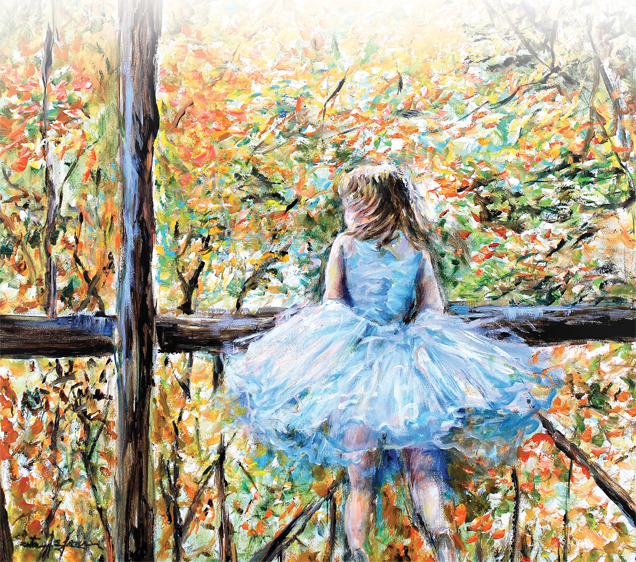Pratiksha Shome
Rita Asfour was different from most other artists. How many artists would depart Southern California for Las Vegas, only to emerge from retirement to paint showgirls?
Rita Asfour was an exception, but most artists are not. The late painter, sculpture, and gallery owner destroyed the barriers dividing high culture from low culture before dancing atop the ruins.
Asfour, who was born Markrit Thomassian in 1933, was a refugee child whose parents had fled the Armenian Genocide and fled to Egypt. Hitler destroyed Egypt while Asfour was just eight years old. To distract herself from the disturbing visions in her head, she painted flowers with crayons. She was inspired to spend the rest of her life making beautiful art by this early painful experience. Asfour first studied painting at the Leonardo da Vinci Italian International School in Cairo. She then spent five years working as a commercial illustrator in Beirut. She obtained employment at Universal Studios in Hollywood as a tourist sketch artist in 1965 after immigrating to the United States.
The sharp observational eye Asfour would use in her later impressionist-style work was influenced by her reversible professional experiences, where she first rendered photo realistic depictions of attractive women in ordinary situations before photographing ordinary people in a glamorous setting.
Asfour made her home in Malibu, where she spent 30 years. She painted seascapes and tried out a variety of artistic mediums during that time, which was when she was most productive. Here, she honed her aesthetic and assimilated into the Los Angeles art scene, eventually founding Galerie Camille in Beverly Hills in 1970. She attracted a number of famous customers, including publisher Otis Chandler of the Los Angeles Times, performer Ella Fitzgerald, and then-President Richard Nixon’s daughter Tricia.
Asfour also pursued one of the main strands of her career—painting ballet students in motion—in Malibu. After watching Pepperdine University students perform and often watching the corps backstage, she was motivated to concentrate on dancers. Asfour also saw young dancers at the exclusive Ballet Studio By The Sea. The Pepperdine dancers addressed their craft with rigour and sharp self-imposed requirements, whilst the infants were kind and unconcerned. She was struck by the various approaches taken by the age groups to dance. “It was a joy to watch the little marvels give it all they had in a show that sometimes lasted only a few minutes,” Asfour recalled in the exhibition brochure of a 2016 retrospective at the University of Nevada.
In Las Vegas, Asfour wed aerospace engineer Jeffrey Asfour; their daughter Amber was born in 1973. Asfour’s initial visit to Las Vegas proved to be quite formative, and he made several trips back to the city to watch acts on the strip. Asfour was as entranced by Vegas showgirls as she had been by the ballet dancers in Malibu because of their physicality and the intricate and vibrant designs of their outfits. This would also turn out to be a persistent fixation. Asfour intended to stop painting when she relocated to Las Vegas in 2012. However, Asfour was motivated to devote the last ten years of her career to Jubilee!, a long-running revue at Bally’s Casino, as well as by her friendship with a former showgirl who had struggled when her performance career ended.
Asfour painted showgirls until her passing in 2021, applying the same acute eye and fantastical imagination to them as she did to her ballet series. Asfour observed that showgirls developed a comparable level of artistry, talent, and commitment to ballerinas despite negotiating overtly voyeuristic and sexist situations, despite the fact that society classified the former tradition as entertainment and the latter as art. “Their stride and poise defined the word ‘dignity,'” she afterwards wrote. Asfour also did.
Asfour painted showgirls until her passing in 2021, applying the same acute eye and fantastical imagination to them as she did to her ballet series. Asfour observed that showgirls developed a comparable level of artistry, talent, and commitment to ballerinas despite negotiating overtly voyeuristic and sexist situations, despite the fact that society classified the former tradition as entertainment and the latter as art. “Their stride and poise defined the word ‘dignity,'” she afterwards wrote. Asfour also did.
Source: ARTnews






